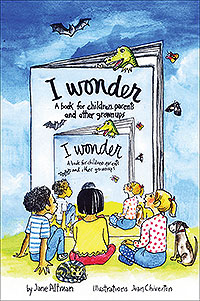Leviticus is the third book of the Bible which has the
purpose as a handbook for the priests. An outline for their duties for worship,
offerings, festivals and a guidebook of holy living for all Hebrews. While the
majority of Leviticus are rules and their consequences, I want to write about
the festivals, the reasons for their celebration and its importance. The book
of Leviticus establishes the holy days of the Hebrew calendar. The festivals
are held from spring to fall. I’ve grouped the six festivals into three categories
of celebration for: deliverance, God’s providence, and restored fellowship and
commitment.
The festivals celebrated as remembrance of God’s deliverance
are Passover and The Feast of Unleavened Bread. Passover is commemoration of
the final plague against Egypt (Exodus 11-12). Passover, or Pasach, is a
reminder of God’s deliverance of his people from slavery in Egypt. Leviticus
23:5 says that the Feast of Passover will begin “at twilight on the fourteenth
day of the first month.” The first month of the Hebrew calendar is Nisan and on
the fifteenth day of Nisan, the Feast of Unleavened Bread (Leviticus 23:6-8) which
the Hebrews were required to eat unleavened bread for seven days. The
unleavened bread is a reminder of the hurried exodus from Egypt. The people did
not have time to allow the bread to rise and they had eat the unrisen bread.
The festival serves as a reminder of leaving behind the old ways and entering a
new life. Today, the Feast of Unleavened Bread is lumped together with Passover
as a weeklong observance in the spring.
The festivals celebrated as a celebration for God’s
providence are the Feast of Firstfruits, the Feast of Weeks and the Feast of
Trumpets. The Feast of Firstfruits is a celebration as reminders that God
provides. Leviticus 23:9-14 specifies that on this day, the day following the
first day of Unleavened Bread, a sheaf of barley was waved before the Lord to
hard the start of the harvest season and leading to Shavuot. The Feast of
Weeks, or Shavuot, is a celebration of joy and thanksgiving over a bountiful
harvest. This feast is observed on the sixth day of Sivan (May-June) which
occurs exactly seven weeks after Passover. Leviticus 23:15-22 details the
Hebrews instructions for this feast. In verse 22, they are instructed to keep
the edges of their fields unharvested so that the poor and the alien (the
stranger) can be provided for as well. The Feast of Trumpets, Yom Teruah, is the
expressing of joy and thanksgiving to God. It is a “day of rest, a sacred
assembly commemorated with trumpet blasts” (Leviticus 23:24). On the first day
of the seventh month, Tishrei, the Hebrews were required to do no regular work
and present an offering to the Lord (Leviticus 23:25). This day is also known
as Rosh Hashanah, The Days of Awe (Leviticus 23:23-32).
The festivals celebrated as restored fellowship with God and
commitment to His covenant are Day of Atonement and the Feast of Tabernacles.
Day of Atonement, Yom Kippur, is celebrated as the removal of sin from the
people and the nation. It is s celebration of restored fellowship with God. Day
of Atonement is the holiest day of year for the Hebrews. On the tenth day of
Tishrei, the Hebrews were required to “hold a sacred assembly and deny
yourselves, and present an offering made to the Lord by fire” (Leviticus
23:27). The Feast of Tabernacles, Sukkot, is celebrated for God’s protection
and guidance in the desert and renews the people’s commitment to God, His
covenant and trust in His further guidance and protection (Leviticus 23:33-43).
The fifteenth day of Tishrei begins the Feast of Tabernacles with a day of
sacred assembly followed by seven days of offerings to the Lord made by fire
and on the eighth day, a sacred assembly to close out the feast (Leviticus
23:35-36). The Hebrews were required to do no regular work.
I’ve written about these festivals very simply and I wanted
to focus on why they are celebrated and not just how or when they are
celebrated. The Hebrews were given these festivals, days to commemorate what
God has done for them. He delivered them from Egypt, from slavery. He provided
food on their journey through the desert. He restored fellowship and commitment
to His chosen people. He accepted atonements for their sins and guided them to
live a holy life. Even through the manner of these festivals have changed, what
has not changed is that they are still being celebrated. The God of the Hebrews
is the God of today. He is still here, delivering us, providing for us, and
guiding us.










































